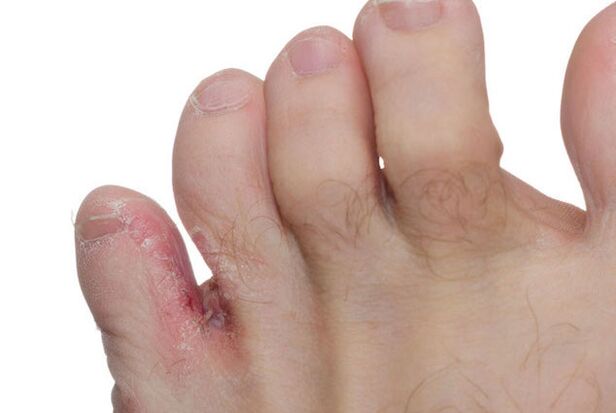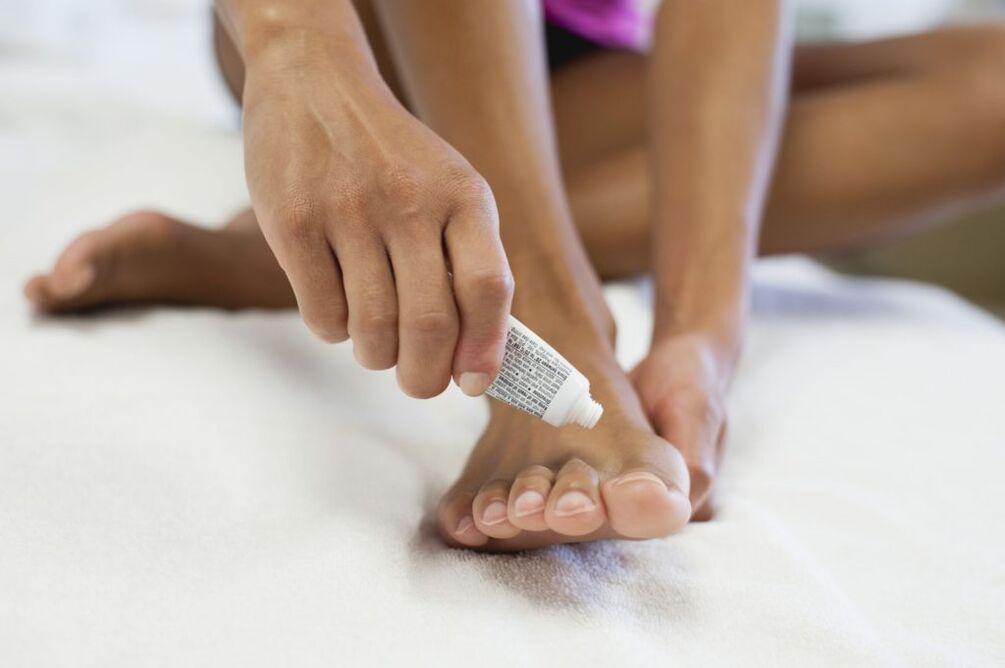Mycosis is a contagious skin disease caused by a fungus. Treatment with an antifungal cream is usually used and gives good results, but not for long. The following tips can help prevent fungus between your toes, which can return even after treatment.
Who can get infected
The disease is very common - every fourth person has an interdigital fungus on their feet. Once this disease is started, treating it can be very cumbersome.
Fungi are often found in small amounts on human skin where they are not harmful. However, under favorable conditions, they penetrate the epidermis, multiply and cause infection. Favorable conditions for fungi are warm, moist and evacuated areas of the skin, for example between the toes.

Almost anyone can get athlete's foot. However, it is more common in people who sweat more or those who wear thick shoes and socks, which also leads to excessive sweating of the feet.
Mycoses can be transmitted from person to person. This can happen, for example, in a public shower that is used by athletes or swimmers. When you shower, small flakes of infected skin with fungus may fall off. Once a small focus of infection develops, it tends to spread along the skin.
What are the symptoms
The skin between the little toes is usually affected first. The first signs of fungus, once the infection has just formed on the skin, are minor. The manifestation becomes noticeable when the rash begins to spread, the skin itches and flakes. Cracks and inflammation appear on it. Large cracks in the skin between your toes can enlarge, which can be very painful. The tiny flakes of infected skin will peel off.
If your interdigital mycosis is left untreated, the rash will gradually spread all over the leg. In some cases it extends to the sole. Often times, the infection causes scaling of the entire sole and sides of the foot. Sometimes mycosis causes large blistering rashes all over the sole. In this case we are dealing with athlete's foot.

How serious is it
Usually no. Most people successfully treat itchy toes before the infection has spread. Sometimes the infection spreads to the skin of other parts of the body. These are usually damp and evacuated areas, such as the groin.
Usually, fungi, including fungus on the feet between the toes, do not spread deeper, only on the surface of the skin. However, other microbes (bacteria) can invade the cracks left over from neglected or untreated mycosis. It can sometimes cause more serious infections of the foot or leg.

It happens that the infection spreads to the nail - it can be cured. But in this case, to get rid of the fungus, it will take several weeks to take antifungal pills to remove the infection from the nails. Therefore, it is best to treat interdigital fungi on the legs in good time, as soon as the first symptoms appear.
Mycosis Treatment
Treating the fungus between the toes usually involves using various antifungal creams and sprays. You can buy topical antifungal drugs at the nearest pharmacy or get a prescription.
To treat the fungus between the toes, it is necessary to apply the antifungal drug directly to the affected area, that is, the skin of the feet.
They're usually sold in the form of creams, but they can also be sprays, liquids, and powders. These preparations remove fungal infections from the skin very well. However, there is no evidence that one remedy is better than the other.

Often times during treatment, the inflammation seems to go away fairly quickly, but you may need to be treated for 1 to 2 weeks after the rash clears up. This is necessary to completely get rid of the fungi on the skin - which will prevent relapse.
If this is the first time you have this disease and do not know how to cure the fungus on the feet and do not make a mistake in choosing a drug for treatment, consult a doctor.
For skin, especially inflamed skin, your doctor may prescribe an antifungal cream combined with a mild steroid ointment. They are usually not used for more than seven days. You may just need to use an antifungal cream for a while after this.
Anabolic steroids reduce inflammation and relieve itching and redness in a short period of time. However, the steroid does not completely eliminate the fungus between the toes and therefore steroid cream alone should not be used for treatment.
Antifungal pills for fungus between the toes are sometimes prescribed to adults when the infection is severe and creams cannot get rid of. Tablets are also needed if the infection occurs on many parts of the skin other than the feet.

However, this treatment of the interdigital fungus is not the same for everyone.
Antifungal pills are not always recommended for women who are pregnant or breastfeeding, or for people with liver disease. Children are usually not given antifungal medication.
While skin fungus can be transmitted from person to person between the toes, you don't need to stay away from work, school, or exercise if you have fungus. However, in public places like a swimming pool or sauna, try to keep your legs covered until the rash goes away. Also, try not to scratch the damaged skin as this can spread the infection to other areas.
The following tips can help prevent recurring mycosis:
- You should wash your feet daily and dry the skin between your toes thoroughly after washing. This is perhaps the most important point. Wear socks if your feet are not completely dry. The damp skin between the toes is an ideal breeding ground for fungi.
- Do not use other people's towels in public changing rooms. Wash towels as often as possible.
- Change your socks daily. Fungi grow in flakes of skin in unwashed socks. Cotton socks and leather shoes are better than nylon socks and shoes made from man-made materials that increase perspiration in many ways.
- Try to switch between different shoes every 2-3 days to allow each pair to dry completely after wearing them.
- Wear flip flops or sandals in public changing rooms and showers. This will prevent your feet from coming in contact with the ground, which may contain other people's skin flakes.
- When you're at home, go barefoot for as long as possible - no shoes or socks to allow air to get to your feet. However, this may not be practical for some.
If the mycosis persists, you can prevent it from coming back by using one of the antifungal sprays or creams regularly as a preventive measure.

















